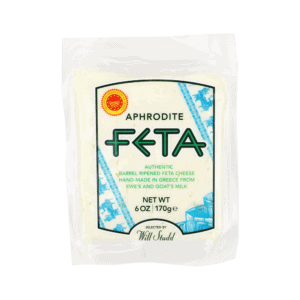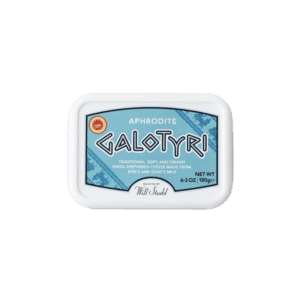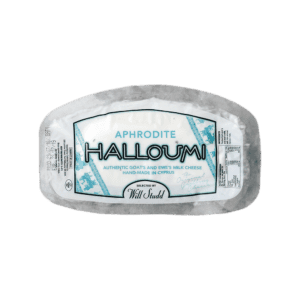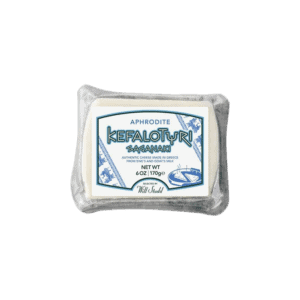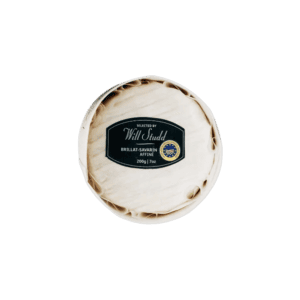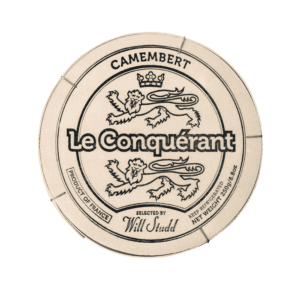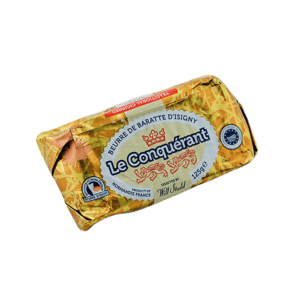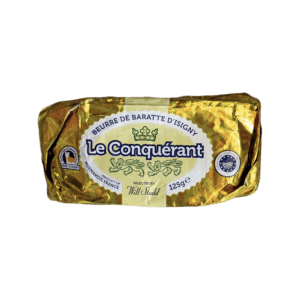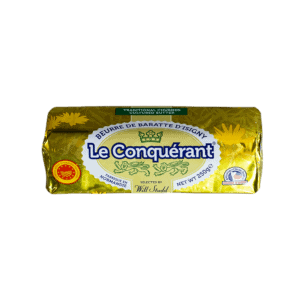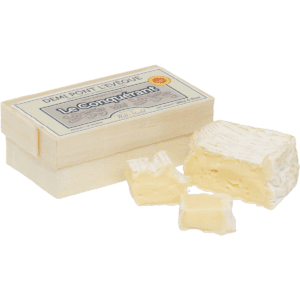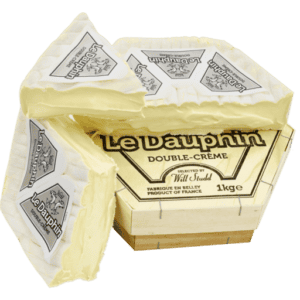Will Studd Aphrodite Barrel-Aged Feta PDO 170g Adelaide Metro Only
$12.95
Aphrodite Greek Barrel-Aged Feta is a rare example of traditional feta. The authentic milky flavours, crumbly and slightly open texture, and yeasty finish are a revelation.
Greek feta is one of the oldest and most popular of all European PDO cheeses with origins that date back to a time when nomadic shepherds roamed the hills of northern Greece. Today, most examples are produced on a commodity scale and are predictable in texture and flavour, but Aphrodite Feta is remarkably different and deliciously superior. It is authentic, ‘real’ feta at its finest and most authentic.
Cheesemaking for Aphrodite Greek Barrel-Aged Feta begins with only the best-quality mountain ewe’s milk and a small amount of goat’s milk, depending on the season. This milk is beautifully and naturally infused with the aromatic flavours of wild herbs, flowers, and grasses ingested by free-ranging flocks.
The fresh curds are drained in special triangular wedges and sprinkled with sea salt from Missolonghi before being left to drain overnight. They are then hand-salted again and layered in beechwood barrels.
The inside of these barrels contain a unique microflora, introduced by smearing the staves with ourda, a mizithra whey cheese. After topping up with whey, the barrels are left at ambient temperature to encourage secondary fermentation, while wooden staves allow the cheese to breathe. Finally the barrels are transferred to cooler, humid cellars to mature for at least three months, resulting in a different and far superior texture and flavour compared to industrial feta, which is matured in tins or plastic.
Add to cart
Will Studd Aphrodite Galotyri PDO 180g Adelaide Metro Only
$13.95
Aphrodite Galotyri is produced under strict PDO regulations in Greece established in 1996. It was specially selected by Will because the recipe has close associations with the Sarakatsani tribe, which has a very long tradition of making cheese in Northern and Central Greece.
Galotyri ‘milk cheese’ was once a seasonal treat, produced in summer by shepherds that roamed the hillside pastures of the Epirus and Thessaly regions of ancient Greece. At that time of year, the late-lactation milk they collected from free-ranging flocks of sheep and goats was exceptionally rich in solids. After natural acidification and salting, the curds were slowly drained in a cloth and cooled in a running stream in clay pots. The result, after several months of ripening, was a unique soft creamy curd cheese, with savoury flavours and the refreshing and nutritional properties of yoghurt.
Soft and spreadable, this pure white cheese has an unforgettable texture, refreshing acidity and a delicious milky finish. Perfect as a simple snack or as a versatile ingredient in the kitchen, it also makes an interesting addition to rich roasted meat dishes. No surprise really, as this is how it was originally served by the shepherds who created it. Just don’t forget the spoon!
Add to cart
Will Studd Aphrodite Halloumi PDO 250g Adelaide Metro Only
$16.95
Aphrodite Halloumi was originally created by Cypriot shepherds as a unique and very practical way of preserving surplus milk during the spring, but today most examples are made throughout the year using cow’s milk.
Will came across this authentic handmade halloumi while filming in Cyprus and immediately fell for its delicious texture and flavour, which is quite different to its mass-produced industrial cousins.
Aphrodite Halloumi is one of the few examples of halloumi still formed into pockets by hand, the traditional old-fashioned way. It is made from a combination of goat’s and ewe’s milk.
Ewe’s milk is high in fat, which causes a delicious brown crust to form when the cheese is grilled or fried, while the goat’s milk provides a firm yet elastic texture, and a subtle lingering lemony tang.
Aphrodte halloumi is handmade and a random weight product.
Will Studd Aphrodite Kefalotyri Saganaki 170g Adelaide Metro Only
$16.95
Aphrodite Kefalotyri Saganaki is hand-made especially for Will in the small fertile town Epirus located in northwestern Greece, using a traditional recipe combining ewe’s and goat’s milk. Fresh milk is collected on a seasonal basis from shepherds’ milking animals that freely forage on the natural vegetation growing on the steep, rugged mountain slopes of the region.
After pressing and brine salting, the cheese is ripened for 3 – 4 months until the hard, slightly irregular texture has developed a mild distinctively herbaceous tang. Traditional Kefalotyri is considered to be the authentic cheese used for Saganaki in Greece. When pan-fried in thick slices, the combination of non-bovine milks produces a dish with a delicious brown crust, rich moist texture and lingering savoury finish. Simply serve with a squeeze of lemon. It can also be grated in cooking and melted on top of pasta, mac & cheese, and pies. A fantastic vegetarian alternative for any backyard barbecue.
Add to cart
Will Studd Brillat Savarin PGI 200g King William Road Store Adelaide PICK UP Only
$28.95
Will Studd Brillat Savarin PGI is a decadent triple-cream cheese and is the perfect party pleaser. It takes its name from the famous 18th-century French food writer Brillat Savarin, and was originally created in the 1950s by Parisian affineur, Pierre Androuet.
This example from Bourgogne, France is unique because, unlike its industrial cousins, it’s ripened under a thin coat of wrinkled yellow Geotrychum mould naturally found in unpasteurised cow’s milk. This mould is rarely used because it is hard to wrap, but the poplar wooden box creates the ideal, moist microclimate for it to thrive.
Deliciously creamy with a slightly chalky centre when young, the texture gradually breaks down until it can be scooped from the centre with a spoon close to its use-by date.
Note: Occasionally our Brillat Savarin will have fluffy white spots / ‘bunny tails’ on its surface. This is entirely natural and does not pose a food safety issue. The small white mould clusters are Penicillium Candidum, similar the moulds used on brie and camembert and develop when the cheese ages.
Add to cart
Will Studd Le Conquérant Camembert 250g Adelaide Metro Only
$28.95
Le Conquérant Camembert is a close cousin of Camembert de Normandie. Its strong aromatic hints of wet straw, brassica and apples are a reminder of why this authentic cheese has become a proud symbol of French cheese-making skills. Handmade for Will in the Pays d’Auge region of Normandy, its secret lies in the use of specially selected cultures, moulds and yeasts and, of course, rich Normandy milk.
The traditional wooden poplar box and wax-paper wrap create a microclimate that encourages the chalky heart of a young cheese to slowly break down over three to four weeks, eventually becoming deliciously soft and fudgy by the use-by date.
Read more
Will Studd Le Conquérant Cultured French Salted Butter AOP 125g Adelaide Metro Only
$8.95
It’s hard to beat the flavor and rich, creamy texture of genuine cultured butter, gently churned the old-fashioned way in a baratte. This hand-molded benchmark butter from the Isigny region of Normandy France is featured in season six of Cheese Slices.
Le Conquérant French Butter carries the AOP symbol and is guaranteed to be made only from fresh local cream cultured using a time-honored, natural maturation process lasting up to 24 hours. Quality varies according to the seasons and the softest richest butter is made during the early summer flush, when the green seaside meadows are covered in a riot of buttercups, daisies and dandelions. These yellow flowers are ingested by the cows and produce a golden butter high in fatty solids, oleic acid and mineral salts packed with floral flavors. This is the butter the Normans traditionally keep for themselves and has been specially selected by Will so you can share in their secret!
Add to cart
Will Studd Le Conquérant Cultured French Salted Butter AOP 250g Adelaide Metro Only
$14.95
It’s hard to beat the flavor and rich, creamy texture of genuine cultured butter, gently churned the old-fashioned way in a baratte. This hand-molded benchmark butter from the Isigny region of Normandy France is featured in season six of Cheese Slices.
Le Conquérant French Butter carries the AOP symbol and is guaranteed to be made only from fresh local cream cultured using a time-honored, natural maturation process lasting up to 24 hours. Quality varies according to the seasons and the softest richest butter is made during the early summer flush, when the green seaside meadows are covered in a riot of buttercups, daisies and dandelions. These yellow flowers are ingested by the cows and produce a golden butter high in fatty solids, oleic acid and mineral salts packed with floral flavors. This is the butter the Normans traditionally keep for themselves and has been specially selected by Will so you can share in their secret!
Add to cart
Will Studd Le Conquérant Cultured French Unsalted Butter AOP 125g Adelaide Metro Only
$8.95
It’s hard to beat the flavor and rich, creamy texture of genuine cultured butter, gently churned the old-fashioned way in a baratte. This hand-molded benchmark butter from the Isigny region of Normandy France is featured in season six of Cheese Slices.
Le Conquérant French Butter carries the AOP symbol and is guaranteed to be made only from fresh local cream cultured using a time-honored, natural maturation process lasting up to 24 hours. Quality varies according to the seasons and the softest richest butter is made during the early summer flush, when the green seaside meadows are covered in a riot of buttercups, daisies and dandelions. These yellow flowers are ingested by the cows and produce a golden butter high in fatty solids, oleic acid and mineral salts packed with floral flavors. This is the butter the Normans traditionally keep for themselves and has been specially selected by Will so you can share in their secret!
Add to cart
Will Studd Le Conquérant Cultured French Unsalted Butter AOP 250g Adelaide Metro Only
$14.95
It’s hard to beat the flavor and rich, creamy texture of genuine cultured butter, gently churned the old-fashioned way in a baratte. This hand-molded benchmark butter from the Isigny region of Normandy France is featured in season six of Cheese Slices.
Le Conquérant French Butter carries the AOP symbol and is guaranteed to be made only from fresh local cream cultured using a time-honored, natural maturation process lasting up to 24 hours. Quality varies according to the seasons and the softest richest butter is made during the early summer flush, when the green seaside meadows are covered in a riot of buttercups, daisies and dandelions. These yellow flowers are ingested by the cows and produce a golden butter high in fatty solids, oleic acid and mineral salts packed with floral flavors. This is the butter the Normans traditionally keep for themselves and has been specially selected by Will so you can share in their secret!
Add to cart
Will Studd Le Conquérant Demi Pont L’Évêque AOC 180g King William Road Store Adelaide PICK UP Only
$22.95
Le Conquérant Demi Pont L’Évêque is a pungent, monastic washed-rind cheese that comes from the heart of the Pays d’Auge in Normandy, France. It is specially made for Will using fresh whole milk collected from the designated AOC region of Pont L’Évêque.
The word ‘Demi’ refers to its small size, which influences how quickly this traditional, soft surface-ripened cheese will ripen compared to its larger cousins. It is packed in a poplar wood box and wrapped in wax paper to form the ideal micro-environment for maturation. It is best enjoyed when the chalky center has broken down to a soft fudgy texture, with a deliciously mild creamy finish.
Don’t be put off by the strong smell. It is an important part of the ripening process for all traditional washed-rind cheeses!
Will Studd Le Dauphin Double-Crème King William Road Store Adelaide PICK UP Only
$109.95 per Kg
Le Dauphin Double-Créme is an unusual hexagonal cheese is a guaranteed crowd-pleaser and takes its name from the term once used to describe the heir apparent to the throne of France.
Select options
Made from rich cow’s milk collected from the beautiful green mountain pastures surrounding the Rhône Valley, it was specially created for Will using a combination of modern techniques and a careful selection of traditional surface moulds.
The wooden box is important because it protects the cheese, and also creates a unique micro-environment for maturation. Best enjoyed fully ripened when exceptionally soft, silky and deliciously creamy.
Product Categories
Brands
- All brands
- Acetaia Leonardi
- Acide
- Albeniz
- Ambrosio
- Ardoino
- Bellata Gold Milling Semolina
- Bisol 1542
- Callebaut
- Cheeseland Holland
- Confiletas Pastry Shells
- Conservas Ortiz
- Delicius
- El Avion
- Fancy Hanks
- Farine Moretti
- Ferron Rice
- Flamigni 1930
- Fromagerie Germain
- Illy
- Kbirr
- La Giardiniera Di Morgan
- Maestri Pastai
- Mandolé Orchard
- Marabissi
- Mulino Bianco
- Olsson's Salt
- Panettone Vergani
- Pasticceria Perbellini
- Patatas Torres
- Paul Dischamp
- Pepe Saya
- Pino's Dolce Vita
- Pollastrini Sardine
- Rio Vista Olives
- Rustichella D'Abruzzo
- Secondo Vergani
- Tartufi Morra
- Trevallie Orchard
- Vannella Cheese
- Venchi
- Vincente Delicacies
- Vivaldi
- Will Studd
- Xavier David

